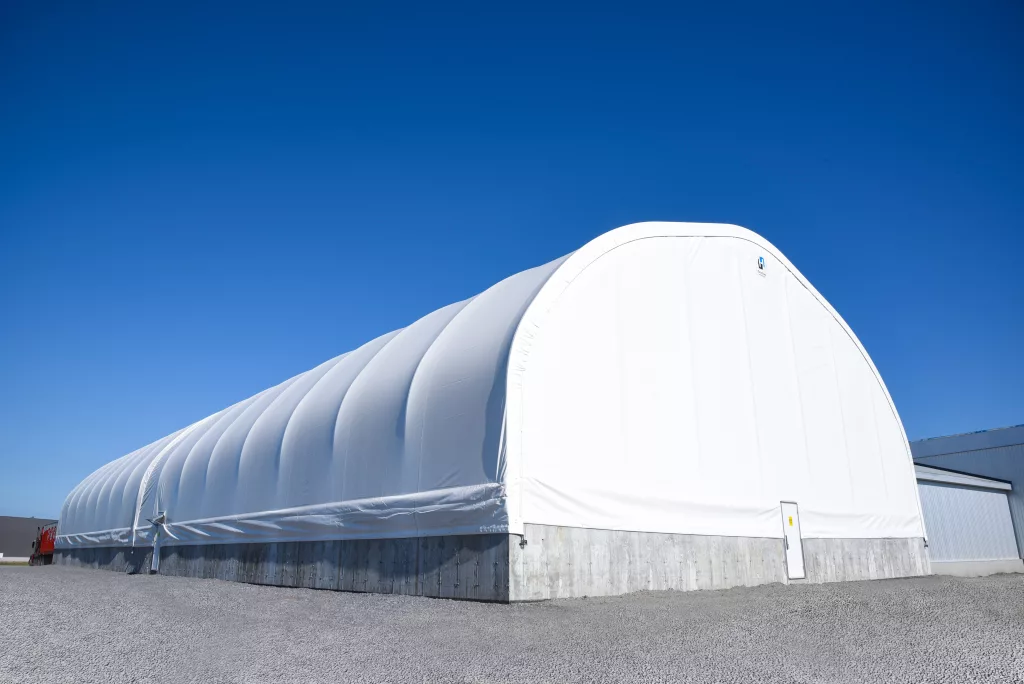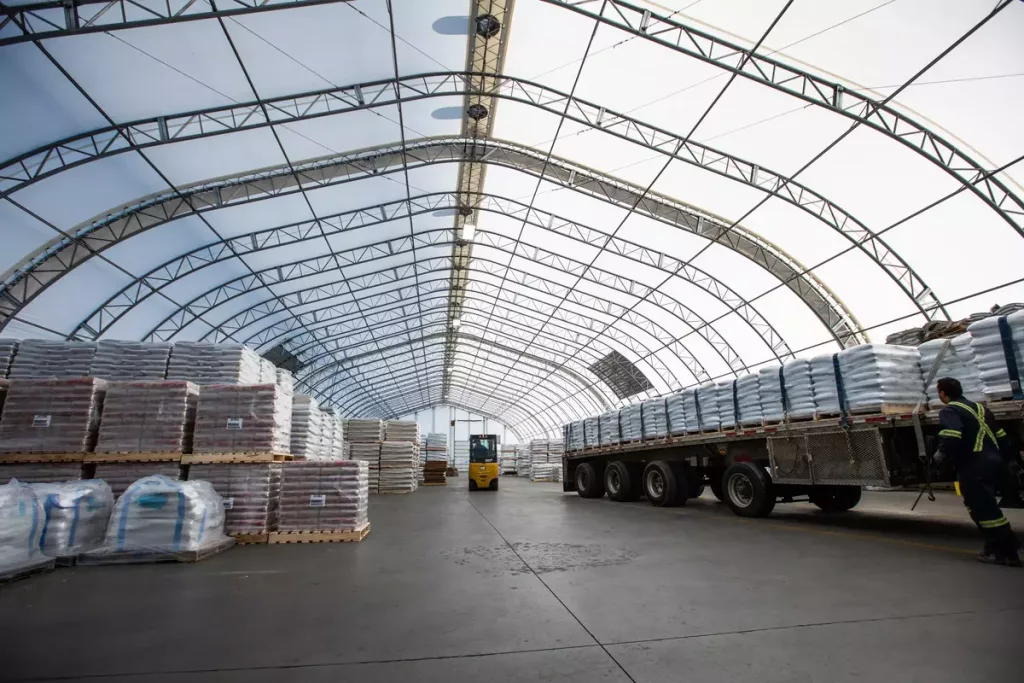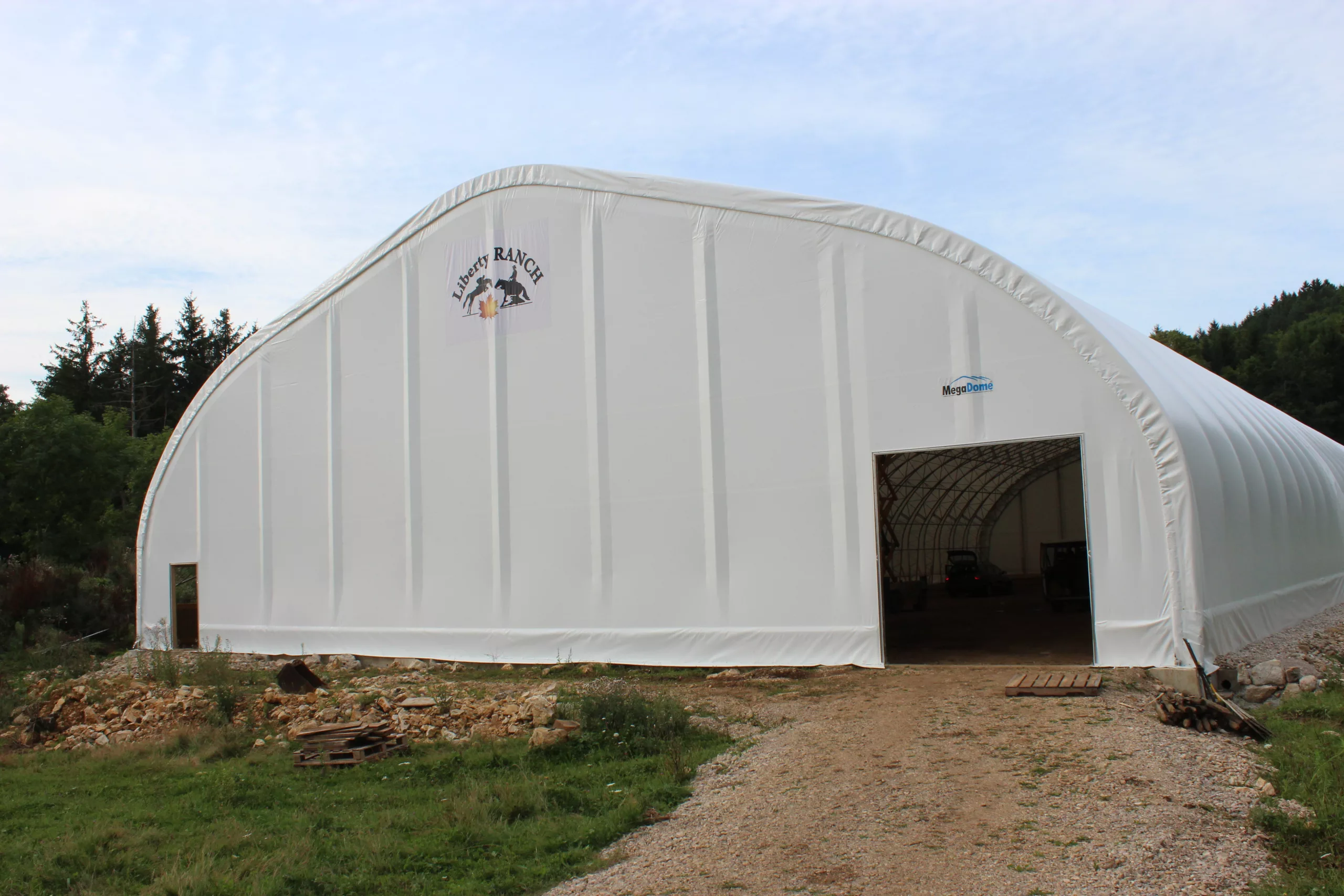Fabric membranes have revolutionized the construction industry by providing cost-effective, durable, and highly versatile solutions for a variety of applications. Whether for agriculture, industrial storage, recreational spaces, or event venues, fabric covers are increasingly becoming the go-to option for businesses and individuals alike.
In this guide, we’ll delve into the benefits of fabric membranes, their applications, the materials used, and how they compare to traditional building materials. Let’s explore why these innovative structures are gaining popularity.
What Are Fabric Membranes?
Fabric membranes are a key component of tension fabric structures, which combine a sturdy steel or aluminum frame with a high-quality fabric membrane stretched tightly over it. These structures are designed to be lightweight yet incredibly robust, offering protection against various weather conditions while maintaining a bright and airy interior environment.

Benefits of Fabric Membranes
Fabric membranes bring numerous advantages to the table, making them an appealing choice for many industries. Here are the standout benefits:
1. Cost-Effectiveness
Fabric-covered building are significantly more affordable than traditional buildings. The materials, labor, and time required to erect them are reduced, resulting in lower overall costs without compromising on quality.
2. Durability
Modern fabric membranes are crafted from advanced materials such as polyethylene or HDPE, offering excellent resistance to UV rays, weather, and wear. These materials are engineered to last for decades, even in challenging climates.
3. Energy Efficiency
The translucent nature of fabric membranes allows natural light to flood the interior, reducing the need for artificial lighting during the day. This feature not only lowers energy costs but also creates a welcoming and productive environment.
4. Flexibility and Portability
Fabric structures can be customized to suit specific needs, whether it’s size, shape, or functionality. Additionally, many of these structures can be disassembled and relocated, making them ideal for temporary or changing requirements.
5. Eco-Friendliness
Fabric membranes leave a smaller environmental footprint compared to traditional materials like concrete or steel. They require fewer resources to produce and install, making them a sustainable choice.
Applications of Fabric Membranes
Fabric membranes have found their way into a diverse range of industries, thanks to their adaptability and performance. Some common applications include:
1. Agricultural Uses
Farmers use fabric-covered buildings for storage, livestock shelters, and crop protection. These structures provide ample ventilation and light, creating optimal conditions for agricultural operations.
We also offer the PowerShield agricultural membrane, specially designed to meet the needs of users of farm buildings for livestock & equestrian arena. This unique membrane lets in 30% more light, compared with 16% for a standard membrane, enabling better solar sterilization. The increased light level helps reduce veterinary care costs through a healthier environment. Moreover, PowerShield helps maintain lower humidity levels, adding to livestock welfare and facility efficiency.
2. Industrial Storage
Fabric membranes are perfect for storing equipment, raw materials, and finished goods. Their large, open interiors and weather-resistant properties ensure valuable assets remain safe and accessible.

3. Sports and Recreation
From indoor rink to equestrian arenas, fabric-covered building provide the space and durability needed for recreational activities. The natural light and spacious designs make them ideal for sporting events and training.
4. Commercial and Event Spaces
Fabric Membranes are a popular choice for trade shows, concerts, and exhibitions. Their rapid installation and striking aesthetics offer a cost-effective yet professional solution for temporary events.
Materials Used in Fabric Membranes
The materials used in fabric membranes are carefully chosen to ensure strength, longevity, and performance. The most common options include:
1. Polyethylene (PE)
Polyethylene is a lightweight yet durable material known for its resistance to UV rays, tears, and harsh weather. It is often treated with additional coatings to enhance its lifespan.
2. Polyvinyl Chloride (PVC)
PVC fabric membranes are heavier and more durable than polyethylene. They are commonly used in structures that require higher load capacities or longer lifespans.
Comparing Fabric Membranes to Traditional Building Materials
When it comes to choosing between fabric membranes and traditional materials like steel or wood, fabric membranes stand out in several ways:
- Speed of Installation: Fabric membranes can be erected in a fraction of the time required for traditional buildings.
- Cost Savings: Materials and labor costs are lower for fabric structures.
- Adaptability: Fabric membranes can be resized, relocated, or repurposed more easily than permanent buildings.
- Environmental Impact: Fabric structures are more sustainable, requiring fewer resources and generating less waste.
While traditional materials may still be preferred for permanent, high-load structures, fabric membranes offer unparalleled flexibility for many other applications.
Key Considerations When Choosing A Membrane
Before investing in a coverall company fabric building, it’s essential to evaluate your needs and priorities. Here are some factors to consider:
- Purpose and Use: Identify the specific application to ensure the structure’s design meets your requirements.
- Local Climate: Choose materials and designs that can withstand your region’s weather conditions, including snow, wind, and rain.
- Size and Customization: Work with a manufacturer that offers customizable options to suit your exact specifications.
- Warranty and Support: Opt for a reputable supplier with strong warranties and after-sales support.
Why Choose MegaDome
At Harnois, we pride ourselves on delivering top-tier sprung buildings designed to meet the diverse needs of our clients. With decades of experience, we understand the importance of quality, durability, and customization.
What Sets Us Apart?
- In-House Engineering: Every structure is designed by our skilled engineers, ensuring precision and excellence.
- PowerShield Membranes: Our proprietary fabrics maximize natural light while maintaining durability.
- Bronze Welding: We’re the only fabric building manufacturer to use bronze welding, enhancing the longevity of our structures.
- Commitment to Sustainability: Our solutions are designed with energy efficiency and environmental stewardship in mind.
Conclusion
Fabric membranes are an innovative, cost-effective, and versatile solution for a wide range of applications. From agricultural needs to industrial storage and event spaces, their adaptability and performance make them an excellent alternative to traditional construction methods.
By choosing a trusted provider like Harnois, you can ensure your investment delivers long-lasting value and supports your specific needs. Ready to explore the possibilities? Contact us today to learn more about how our fabric-covered structures can transform your operations.

